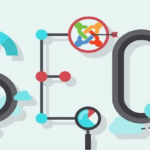5 marketing technology trends CMOs need to master for 2018
As we enter into 2018, columnist Jim Yu lays out five martech trends you’ll need to monitor to lead your organization to success in the year ahead.

As you put together your marketing strategy for 2018, there have never been more tools and tactics fighting for your budget. Technologies considered emerging over the last several years are beginning to peak as marketers inch closer to realizing the full potential of AI, machine learning and voice search. Privacy concerns over tracking and data collection have given way to demands for greater personalization across platforms, channels and devices.
All of this increasingly granular, targeted marketing powered by technology enables more meaningful consumer interactions, driven by a massive amount of consumer data. The next big step in moving the needle on performance requires that you sync your tech around your understanding of that data, and martech is leading the way.
As you prioritize your areas of focus, know that mastering these five martech trends will be critical in 2018.
1. Capitalize on the convergence of martech and ad tech
Given the competitive nature of budget allocation between ad tech and martech, it’s no wonder many executives dread their convergence. Take it from Joe Stanhope at Forrester, though: This convergence of ad tech and martech is nothing to be afraid of.
In a recent CMO.com column, Stanhope shared the two major benefits of the convergence: economic throughput and contextual marketing. Convergence redefines the path of marketing spend across technology, data, media and content, he wrote. As for the latter, it also advances the technology stack and drives engagement across touch points, devices and stages of the customer life cycle.
I’ve written about this convergence myself here at MarTech Today, including the skills you’ll need to navigate this brave new world where ad tech is automating markets and martech is scaling business outcomes. Marketing technology has grown rapidly to claim a 33 percent stake of the marketing budget, according to Gartner’s CMO Spend Survey 2015-2016, and you should expect that to grow in 2018 and beyond.
Dig into this great read on “Becoming a martech mastermind: Agility, proficiency and accountability”to learn more about the mindset and skill set that will best lend to your success as a hybrid marketing leader.
2. Put the AI revolution to work for you
Are you prepared to speak knowledgeably on artificial intelligence and defend its role in your organization? How will you measure the ROI of your AI efforts?
Because it’s not a magic-button solution for every challenge, there’s great value in making sure you’re applying AI only where it can actually move the needle. Home in on those high-volume, low-margin areas of the business, and examine the ways AI could help reduce frustrations and improve ROI. Go for the quickest wins first to prove its value early on and win buy-in across the board.
There are even greater gains to be made with a customer-first approach. The machine learning component of your AI technology drives deeper, more insightful connections along each customer’s journey, enabling you to engage with content that resonates when it matters most.
This is critical in 2018, which may well be smack in the middle of the rise of the Internet of Things. By 2020, some expect the IoT to have grown to a sobering 75 billion connected devices. Machine learning is critical as we try to keep pace with the rapidly evolving consumer behaviors and preferences that brings.
3. Take advantage of the wide open spaces in voice search
The opportunity that is voice search increases exponentially when you look at how many marketers are dropping the ball. My company, BrightEdge, found that 31 percent of marketers believe voice search to be the next big thing, and we already know that 20 percent of all Google searches now stem from voice queries. It’s going to get bigger, too; comScore predicts that by 2020, 50 percent of consumers will be interacting with voice-activated technology.
 Companies like MapQuest are evolving with voice search in mind. MapQuest is working to improve natural language navigation so that users can interact without a visual interface, Andy McMahon, MapQuest’s director of search and local data, said at a conference earlier this year. He said voice search is in an awkward “first date” phase, but will grow and evolve.
Companies like MapQuest are evolving with voice search in mind. MapQuest is working to improve natural language navigation so that users can interact without a visual interface, Andy McMahon, MapQuest’s director of search and local data, said at a conference earlier this year. He said voice search is in an awkward “first date” phase, but will grow and evolve.
Smart marketers are all over voice search, so how do we explain that over 60 percent still have no plans to prepare for voice search?
While they sort themselves out, there’s a huge opportunity for forward-thinking CMOs to take advantage of the reduced competition caused by those dragging their feet. You can begin mapping your content consumer intent at the right points of their decision-making journey.
For example, we know that the majority of voice search queries are conversational in nature. Your understanding of that intent enables you to tailor your content and position it as the best answer for those voiced queries.
Increase your content’s visibility by answering questions using in-demand keywords that align with the topics that matter to your brand. Which brings us to…
4. Create SMART, purposeful content to win eyes and conversions
Now that you’ve mastered process and production, you have a solid underpinning of quality content to build on. Shift your focus to discovery and performance, where the most impactful gains can be had.
Poor content performance is a nearly universal challenge for marketers, 71 percent of whom say that less than half their content is consumed at all, our company research concludes. I recommend that CMOs look at content through the SMART lens (where S stands for Specific, M for measurable, A for achievable, R for relevant and T for timely), ensuring content is:
- targeted to exactly what customers want and need when they need it.
- optimized to make the content more visible and discoverable.
- always on and always optimized — adaptive, dynamic, and relevant.
- integrated and activated across devices and the entire marketing stack for maximum impact.
- profitable for the marketers because the content delights and engages readers on topics they have intent for and primes them for conversion.
Martech, AI and the power of ad tech-based automated buys will make content promotion more effective and power increasingly more granular targeting. Tackling your content strategy with SMART in mind will ensure that you have the most thoughtful, helpful, relevant content to feed your ideal consumers’ needs for information.
5. Get granular with a hyperlocal mobile search strategy
Even national or global multilocation brands need a local marketing strategy. Nearly a third of all searches from a mobile device are related to location, and the previous years’ trend of rising “Near Me” searches has given way as consumers have dropped the qualifiers and instead assume results will be relevant to their location, according to Google.
Martech is really the only way large brands are going to be able to handle the demand for accurate, timely location information at scale. Consumers simply won’t give you another chance if the store hours for Store #847 in Bowling Green, Kentucky, are wrong, and they click for directions to a closed store. Worse yet, inaccurate location data undermines search engine trust in your brand and can negatively affect your ability for locations to rank in the communities they matter most.
Nearly two-thirds of smartphone users are more likely to purchase from companies whose mobile sites or apps customize information to their location, according to Google. In 2018, smart CMOs will get on board with local marketing technology designed to empower local managers while retaining brand controls.
Optimizing the listings for hundreds or even thousands of locations at scale is a challenge that demands highly localized content, from in-store photos to current promotions to local customer reviews.
Martech gives even the smallest franchises, corporate locations and service-based businesses access to powerful, enterprise-level content and SEO tools. Make sure your locations aren’t missing out on these highly motivated consumers who are on the go and in their need-to-buy moments.
Setting your organization up for martech-driven success in 2018
As we redefine our marketing spend across technologies and human capital, we’ll find that perhaps fewer people are needed but those in control of these powerful martech tools will be uber-specialists across disciplines. In that way, even as the prevalence of martech grows, the humans who drive it will become more — not less — important.
Be careful not to place too much emphasis on inputs, as well. Prioritize outputs — your revenue, your customer value — but more importantly, the performance imperative should be your top priority as you’re planning for the year ahead.
Call Elkmont Media for all of your digital marketing needs, including: social media, website design, SMS, text message marketing, video, and email marketing.
Comments are closed.











